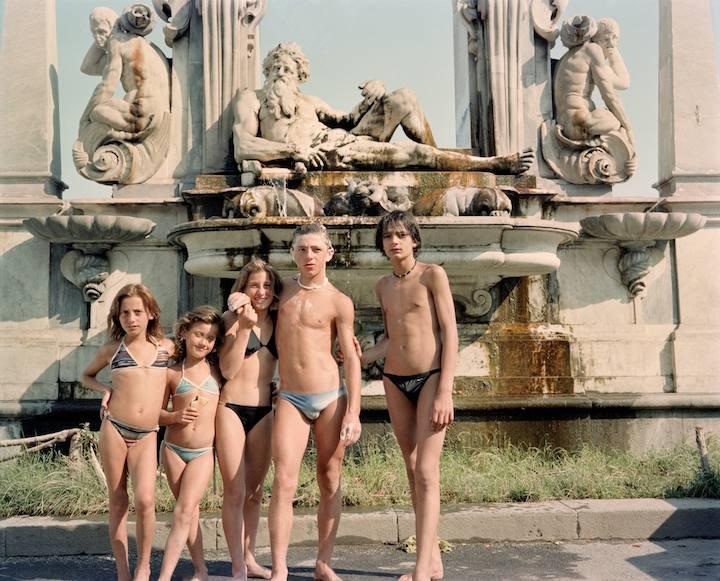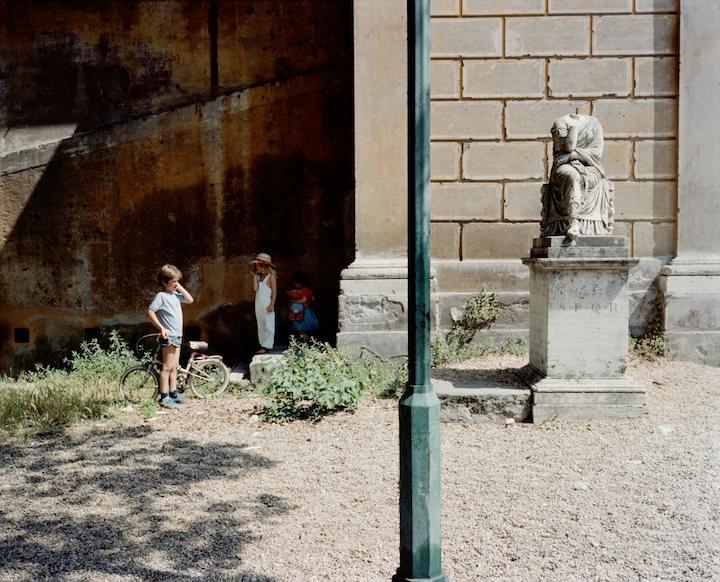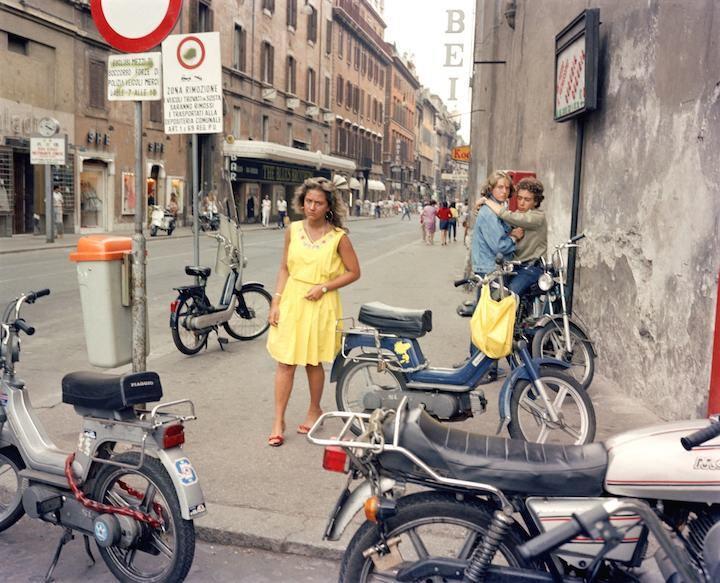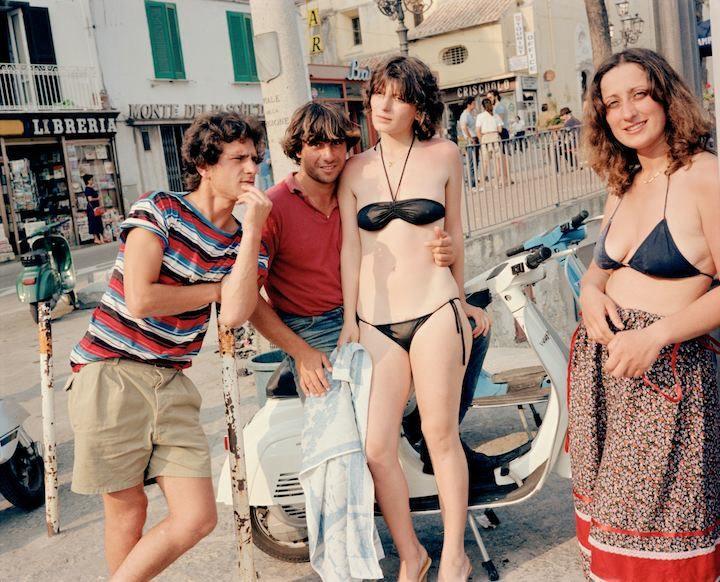Charles H. Traub: Dolce Via
The road trip—in literature, in cinema, in photography—is one of the great formal devices for telling a story. Against an ever-shifting background, complex narratives that
often explore the darker side of human nature unfold. In photography, Robert Frank’s America; Paul Graham’s A1; Joel Sternfeld’s American
Prospects; and more recently, Alec Soth’s Niagara come to mind.
But with Dolce Via, Charles H.Traub has done something else. He
takes us to an endless summer in Italy, back in the 1980s, presenting his fellow travelers in moments of sensuous pleasure and style. He drops an occasional clue regarding the influence of Italian
cinema, from Fellini’s Dolce Vita (inspiration for the book’s title and the serial dipping he captured at Fontana di Trevi) to an old man with a dog (perhaps a nod to
De Sica’s Umberto D.). But his shrewd yet generous observations of small dramas played out against the classical architecture of Rome, Milan, and Florence are his alone.

Italy’s architectural masterpieces play a major role, but always as backdrops for human interactions that unfold before Traub’s lens. Fountains—in Rome, Naples and Siena—are sites of disrobing and cooling off. Near a heroic but headless statue that bears the mark SPQR [“The Senate and the People of Rome”], a young boy seems to ponder the future, his gesture echoing the pose of the ancient statue. In front of the great cathedral of Orvieto, a man in a bold red-and-white striped shirt offers a dare to the façade’s subtle white and gray marble striping.

A sharply observant street photographer, Traub generally catches his subjects unaware. In one pair of
photos, however, a woman, her back to him, senses his scrutiny, then turns to face him down. A scene in which a young woman glares into the camera seems to play out a line from
Ovid's Metamorphoses, “Propinquity breeds contempt”—but only if one young man in the background is her lover and the other, a younger brother. In a picture of two
young men engrossed in conversation, seated below a colossal statue at the Uffizi Palace, one defensively shields his face from the spying lens.

While the photographer underplays his hand as the proverbial fly on the wall, capturing his subjects in graceful or awkward moments, he occasionally invites them into a tableau of their own design, such as this group in Amalfi (below), which became the book's cover image.

Traub has captured the ethos of a country bent on pleasure—its people
sunning, swimming, kissing, holding hands, smoking, playing, or just eating ice cream—from youth to old age. With young, good-looking men and women disrobing often, and as much as possible, the
Italy of Dolce Via is a feast for the senses. In addition he has observed the strong bonds that can exist between young and old. In a pair of photos, one posed, the other not,
children so fresh and dewy they seem newly hatched, are quietly in synch with their elders.
You can join Charles H. Traub on Friday, April 18 at 6 pm for a book signing at
the International Center of Photograpy Store. 1133 Avenue of the Americas, NY, NY. Information.
Charles H. Traub: Dolce Via | Italy in the
1980s (Damiani 2014). Foreword by Max Kozloff. Introduction by Luigi Ballerini. Information.


